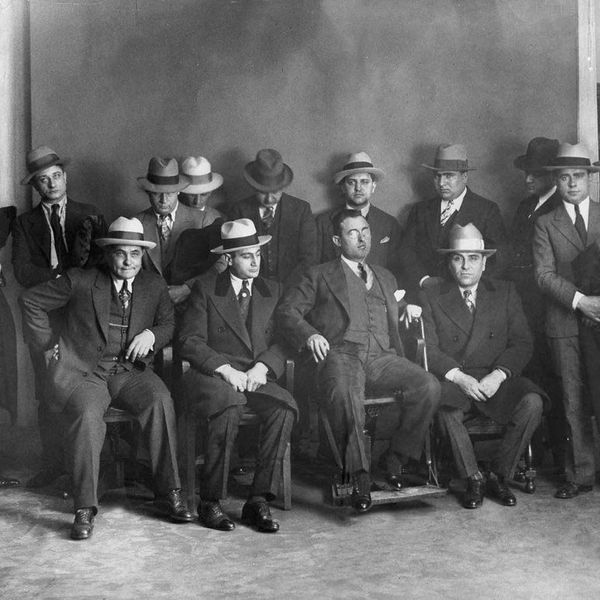Have you ever observed a pack of wolves, either one that was confined by a wolf organization/sanctuary or by watching the wolves on television through the nature channels such as Animal Planet? Maybe you’ve seen both. If so, you may have noticed a dominant behavior notorious in wolf packs where the head of the pack chooses the roles in which each of its predecessors or clan mates follow. This type of behavior is synonymous in wolf packs whether they are confined or a wild pack. This order, ranked from least to greatest of importance in a pack, is: omega, neutral, beta, and alpha. The way this order is chosen within a pack is through an intricate process through which the wolves battle and fray for dominance. Perhaps, if we attempt to understand how the animal kingdom functions through prosocial behavior then we will come to understand the order of a wolf pack. Wolves choose dominance within a pack in more ways than one, such as through moral choice, prosocial behavior, and competitive order.
Morality is defined as “a suite of interrelated other-regarding behaviors that cultivate and regulate complex interactions within social groups” (Pierce, 2012). This comes into play when we talk about the three “clusters” or general groupings of behavior that moral behavior falls under: altruistic and cooperative behaviors, empathic behaviors, and justice behaviors (Pierce, 2012). Of all of these groupings of behavior, “justice is probably the most cognitively complex and also the least broadly distributed across different taxa” (Pierce, 2012). The altruism/cooperation cluster has the most sufficient research to make a strong case for the empathy cluster but the justice cluster is harder to find research results for, therefore it will be harder to discuss. Since most people are aware that wolves tend to be caring towards each other within their packs, this paragraph will mostly discuss the justice cluster. What we know about social justice is that animals are capable of showing this to some extent but it is not often seen. In a special issue called Social Justice Research, social justice in animals was closely looked at and was examined for what we currently know about social justice. Pierce explains that “justice is an important area of study because it may help explain social dynamics among individuals living in tightly-knit groups, as well as social interactions among individuals who only occasionally meet” (Pierce, 2012). The study of justice in animals is so new that researchers don’t have a clear definitional landscape within which to work. At a basic level, “justice” refers to what is merited or deserved. In Wild Justice it is proposed that justice behaviors are one of three major clusters of moral behavior in animals. “Justice, in other words, is an umbrella term covering a range of behaviors related to expectations about what one deserves and how one ought to be treated in relationships with others” (Pierce, 2012). So from this we can safely gather that social justice is rarely seen but that it still exists in the animal kingdom, let alone just in wolves.
Given that life in the wild can be perilous and getting injured can have dire consequences, prosocial behavior is seen as an evolutionary benefit (Pierce, 2012). This could allow us to expect to see certain patterns of prosocial behavior evolving in diverse species. Within evolutionary biology, one of the central puzzles of the past several decades has been trying to apprehend and understand why animals work together and get along. Animals such as wolves engage in prosocial behavior because it helps one another thrive in their ecological community. Consider, for example, the astonishing results of research conducted by Washington University anthropologist Robert Sussman and his colleagues. In their research they found data on the social interactions of assorted primate species, and the researchers came to the conclusion, then, that the vast majority of cordial interactions were affiliative (adoptive) rather than agonistic (combative). Affiliative or adoptive behaviors, such as grooming and playing, were far more commonly seen than fighting (Sussman, Garber, & Cheverud, 2005; Pierce, 2012). Some agonistic behaviors found in canids/wolves however is categorized into four separate groups: aggression, submission, defense, and sexual (Jenks S., 2011). In Sussman’s 2011 book, with Robert Cloninger, Sussman provides strong evidence that this is true among animal species in general, not just primates (Sussman & Cloninger, 2011). Prosocial behavior helps in many more ways than one such as helping animals avoid injury. “Prosociality is now seen not just as a by-product of competition, but as a central driving force of evolution in its own right” (Pierce, 2012). By working together, individual animals can accomplish much more than they could alone, as for example in cooperative hunting, vigilance, and care of the young seen in wolves. “Peter Corning, in The Fair Society, notes that social relationships, and especially social networks, can have real value and add productivity to any purposeful activity” (Pierce, 2012). In other words, social capital provides the wherewithal to achieve individual goals in contexts where we can benefit from cooperating with others (Corning, 2011, p.82). The essential first principle in every social relationship, and in every (stable) human society, is honesty and fair play. “Deception, lying, cheating, stealing or any other action that deliberately causes harm is unfair conduct, and ‘undermines the implicit social contrast based on mutual trust and reciprocity that we ultimately all depend on in our relationships’” (Corning, 2011, p. 17; Pierce, 2012).
Studying populations in a controlled, captive environment helps tremendously in understanding animal behavior such as wolf behavior. “Controlled, captive studies are exceedingly important and have provided most of the raw data we now have about social justice behaviors in animals. Nevertheless, laboratory studies of animal cognition are fraught with problems” (Pierce, 2012). One significant challenge perhaps is that animals held in captivity do not necessarily behave just like their wild relatives, so it is very hard to generalize from the behavior of individuals in a captive group to members of the same species living in the wild (Pierce, 2012). Many wolves are territorial, gregarious carnivores that live in packs, which customarily include a breeding pair, the offspring from several years, and at times dissimilar wolves (Mech 1999; Caniglia R., 2014). Packs scent mark and defend their territories, and their territories often remain established for several successive breeding pairs (Caniglia R., 2014). This means that wolves can have many offspring before their territories must change. Pack members even cooperate in hunting and rearing pups (Mech and Botani, 2003; Caniglia R., 2014). “Canid species are unusual among the Mammalia in being primarily monogamous. Males may play an indirect or direct role in parental care, depending on a species degree of sociality. Canid species also differ in developmental parameters, and reproductive suppression is common in the group-living pack hunters” (Kleiman D., 2011). Overall, captive wolves do not display as many behavioral characteristics such as prosocial behavior as wild wolves/non-captive wolves do that live in the wild.
Many ethologists have studied wolf behavior. Ethologist Rolf Peterson stated “Behavioral evidence of leadership in gray wolves has not been systematically evaluated, so we selected five plausible behavioral indicators of leadership that were observed regularly in the field: scent-marking; frequency and time in the lead while packs were traveling or hunting (frontal leadership); initiation of pack behavior; and nonfrontal leadership” (Peterson R., 2002). These behaviors are more commonly seen in wild packs, however. Scent-marking was included as a leadership indicator because it is an integral component of travel and dominance expression (Peters and Mech 1975). One other interesting fact about adult wolves and their playing behavior is that there is an absence of sexual dimorphism. In a wolf pack both males and females share the same roles and behavioral repertoire (Cordoni G., 2009). This allows room for equality within a pack since males and females can share similar roles and are able to make the same decisions since either or can rule an assemblage of wolves.
Finally, in captive wolf packs, as well as in wild packs, “individuals may constitute a hierarchical order in which they are featured as alpha, beta until omega and in which each gender has a separate hierarchy” (Zimen, 1982; van Hooff, 1987; Mech, 1999; Cordoni G., 2009). Accordingly, wolf colonies that were under study showed a linear progression/hierarchy within each sex and all males are dominant over females (Cordoni & Palagi, 2008; Cordoni G., 2009). However, similar research has conflicted with this idea. Nevertheless, wolves do not have an abiding/enduring hierarchical status: in both wild and captive conditioned packs, wolves change their ranking position over time (Fox, 1971; Fox & Andrews, 1973; Zimen, 1976; Wilson, 2000). In particular, wolves that are adjacent in ranking position may be more likely to compete for obtaining a hierarchical advantage and, thus, increasing their dominance status. According to Zimen (1982) wolves can use play to test social partners and as a prelude to figuring out dominance ranking. Based on this framework, we can expect that a negative correlation between rank and play distribution exists. (Cordoni G., 2009). From this we can safely conclude that wolves need social interaction such as play to determine their ranking in the pack/group. This, consequently, aids each wolf in understanding which role they are to play in the pack, and over time their role can either advance (such as to neutral/beta/alpha) or recede (such as to beta, neutral, or omega) (Cordoni G., 2009).
In conclusion, wolves, like most animals, have a social system of justice where morality and choices rule over all of their decisions. Wolves choose dominance within a pack in more ways than one, such as through moral choice, prosocial behavior, and competitive order. Prosocial behavior allows for wolves to make choices that appeal to both themselves as well as to their clan mates. Captive wolves compared to wild wolves are engaged in less violence but still remain in the same civil structure of omega, neutral, beta, and alpha (from least to greatest order of power). Some significant behavioral signs that are more commonly seen in wild packs, however, is scent-marking, frontal leadership, initiation of pack behavior, and non-frontal leadership. Despite being more commonly seen in wild packs, it is also possible to find this behavior in confined wolf packs and sanctuaries. Last but not least, captive wolves tend to behave slightly different from their wild wolf ancestors. For example, territories are defended no matter what, but scent-marking is more commonly seen in wild packs, not captive groups. Lastly, agonistic and affiliative social interactions are commonly seen in wolves, such as helpful behaviors and aggressive behaviors. Their ways of playing can also be considered helpful or harmful as well. Based on this research we can definitively say that wolves in wild packs versus confined (captive) packs share many synonymous traits, but that visible differences can also be seen. Through understanding these prosocial creatures can we further understand how they develop both socially as well as physically and mentally. Wolves, like many animals, need order and justice in their packs in order to make the right decisions without causing a disturbance in the group. Family-like creatures, such as wolves, stay closely knit in their surroundings and through this research I hoped to display this. By revealing how wolves interact in their environments we can further understand their social and cognitive behavior/development.





















